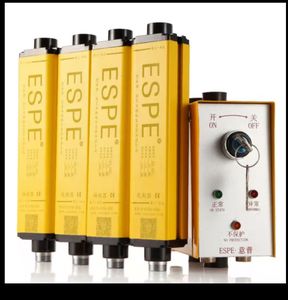Introduction to Safety Edge Sensors
A safety edge sensor is a critical component used in various machinery and equipment, designed to enhance safety by preventing accidents during operation. These sensors are primarily employed in environments where doors, gates, and industrial equipment pose potential risks to personnel. By detecting obstacles, safety edge sensors ensure that machinery halts or reverses upon sensing any obstructions, significantly reducing the risk of injuries. This innovative technology is increasingly becoming indispensable in manufacturing, construction, and transportation sectors.
Types of Safety Edge Sensors
Safety edge sensors come in various types, each designed to serve specific operational needs and environments. Understanding these classifications is crucial for selecting the appropriate sensor for your application.
- Pressure-sensitive Safety Edges: These sensors use rubber or silicone edges to detect pressure changes when an object interrupts the signal, leading to an automatic shut-off.
- Optical Safety Edges: Utilizing light beams, these sensors can detect obstacles without physical contact, providing a wider detection range and enhanced safety.
- Electromagnetic Safety Edges: These sensors employ electromagnetic fields to identify nearby objects, suitable for high-speed machinery and rigorous industrial environments.
- Capacitive Safety Edges: These use capacitance technology to sense proximity, which allows for quick reaction times, ideal for fast-paced operations.
Applications of Safety Edge Sensors
Safety edge sensors are versatile and can be implemented in numerous applications across different industries. Their adaptability makes them suitable for various safety protocols.
- Industrial Machinery: Employed in robotic arms and conveyor belts to prevent accidents and ensure safe interactions with human operators.
- Automated Doors and Gates: Used in commercial and residential settings to detect people or objects in doorways, preventing closures on them.
- Transportation Equipment: Critical in scenarios involving forklifts and automated guided vehicles (AGVs) to enhance workplace safety.
- Elevators and Lifts: Integrated to ensure that doors safely open and close without causing harm to passengers.
Advantages of Safety Edge Sensors
Incorporating safety edge sensors into your operations offers numerous benefits that significantly bolster workplace safety and efficiency.
- Enhanced Safety: By preventing accidents, these sensors not only protect workers but also reduce potential liabilities for companies.
- Increased Efficiency: Quick and reliable obstacle detection minimizes downtime, allowing for smoother operational flow.
- Cost-Effective Solutions: While the initial investment in safety technology may seem steep, the reduction in accidents and associated costs proves to be financially beneficial.
- Compliance with Safety Regulations: Most industries are governed by strict safety standards, which these sensors help businesses meet effortlessly.





























































































































































































